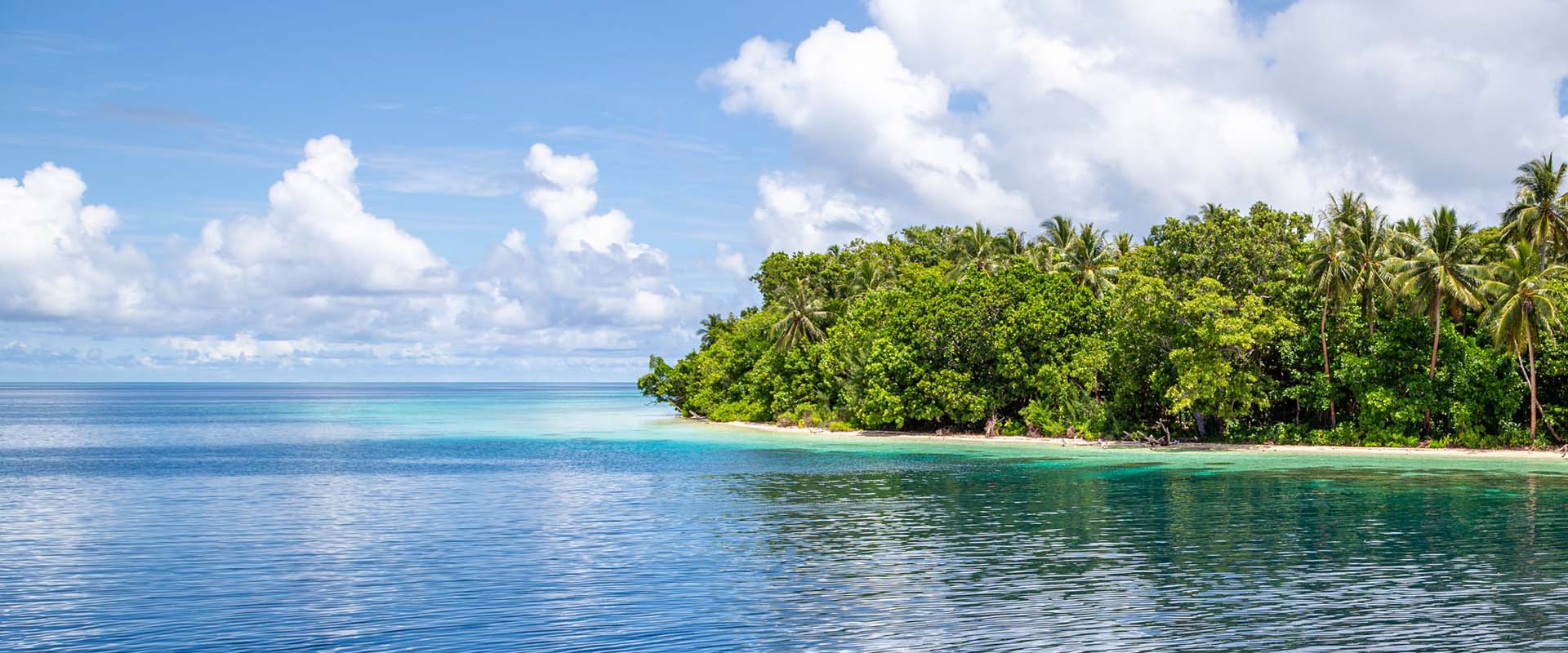Liveaboard Diving in Russel Islands
What to Expect On a Russell Islands Liveaboard
A Russel Islands liveaboard will allow you to cruise the area comfortably and access more remote and expansive dive sites within the Solomon Islands. This area is made up of two islands, Pavuvu and Mbanika as well as many much smaller islets, all of the volcanic origin, and boasts some of the region's most famous dives. On your liveaboard dive trip, you will enjoy spectacular visibility underwater, while topside local coconut plantations cover the islands. As with the rest of the Solomon Islands region, the water temperatures are warm (80°F/27°C) and tropical weather tropical making for generally pleasant diving and sailing conditions.
What You Can See
Before becoming a popular dive destination the U.S. forces occupied these islands during World War ll and as with the rest of the region, fighting occurred in the direct area resulting in excellent wreck diving opportunities. Liveaboard itineraries will allow you to visit some of these fascinating wrecks. White Beach was an ammunition and equipment dump, similar to Million Dollar Point in Vanuatu. Over the past seventy years, the seabed littered with boats, trucks, jeeps, and munitions has developed into beautiful reef structures.
The region's volcanic underwater structures provide the liveaboard diver with endless walls, seamounts, and pinnacles and caves to explore; all covered in marine life from tiny to massive. Schools of barracuda and millions of smaller fish, turtles, sharks, mantas, dolphins, and even the occasional saltwater crocodile make this a spectacular region for liveaboard expeditions.
Dive Sites of the Russell Islands
Choosing a dive site in the Russell Islands is almost impossible. Ranging from wrecks to caves, there is so much to explore on your liveaboard dive cruise.
One of the most famous sites is Custom Cave. Entrance to the cave is a bit tight but once inside divers can view a halocline, formed from the freshwater sneaking into the cave from a nearby stream. This stratification of saltwater below freshwater can cause it to look like air. A magical place indeed!
A very accessible wreck, The Wreck of the Ann, is an island freighter sunk along a sandy slope in 30 to 102 feet of water that is now covered with a thick layer of marine life. Coral grouper often pose for the camera. The soft corals and gorgonian provide sweet hiding places for blennies, puffers, and hawkfish. Hover at the bow, kingposts, and wheelhouse to absorb the color. Ann is an old coastal fishing vessel covered in large and small critters. Keep an eye out for pipefish, dragonets, lionfish, mantis shrimp, and the odd grouper. It's certainly mentioned as a favorite site for many divers. Even the sandy shallows will keep you enthralled with garden eels and gobies.
Fonogho boasts giant clams, ample numbers of healthy anemones, as well as schools of barracuda, reef sharks, and multitudes of fusiliers gliding about.
White Beach, as mentioned previously, is a well-known dive. Photographers, WWll history buffs, and macro lovers alike will enjoy poking around the wrecks and munitions covering the seafloor. As a dumping ground during the war, it houses jeeps, trucks, bulldozers munitions, and other wreckage. In the shallows the macro prizes are hidden away; search for ghost pipefish, tiny mandarin fish, and more.
Kaukau and Koemurun are excellent wall dives. Each has one protected side, perfect for viewing healthy hard coral gardens. Their more exposed sides feature pelagics often spotted off in the blue.
Leru Cut cannot be missed! Hop off your liveaboard boat and glide along between the walls of a crevasse that cuts through the island itself. Rays of the sun sparkle and scatter along the walls as they shine across your path. At the back of the cut, surface and enjoy a view of the jungle while you listen to the tropical birds call out around you. You may also meet some locals here.
Another famous site, Mirror Pond, is a spectacular cave dive and wall combination. Peer closely into the sea fans and spot the pygmy seahorses swaying along, hanging on by their tails.
Don't miss Bat Cave, easily accessed and full of small and large critters. Bring your torch so you can take a peek at the nocturnal residents hanging at the top of the cavern, giving it its name. You may be lucky and spot the baby reef sharks that like to relax at the entrance to the cave.
Getting to the Russell Islands
Honiara is the capital and primary port of departure & arrival for Solomon Islands liveaboards and lies on the northern shore of Guadalcanal Island. All liveaboard dive expeditions depart from Honiara and the Russell Islands are directly Northwest, approximately 48 kilometers from the island itself and approximately 100 km from Honiara. This area can be explored on a 3-day cruise or part of a longer itinerary.
Russel Islands Diving Reviews
- 9.2 Superb
- 8.8 Fabulous
- Catherine M
Canada
Wonderful! Great swim throughs & lots of fish
Diving Russel Islands in October on the Solomons Master











